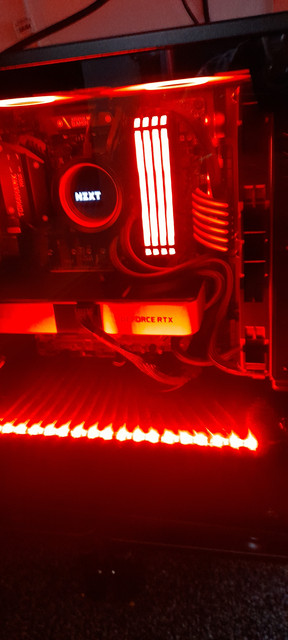Installed my first ever AIO ! NZXT Kraken.
Went fairly smoothly, however I couldn't mount it up the top so had to put it at the front. The spec on my case says it can house a 240mm AIO but obviously not. It also said " max component height on motherboard 40 mm "
Upon thinking about it, that's probably a good thing as if I mounted it up the top, i'd be blowing hot air from the case into the radiator. So putting it at the front in a pull configuration, pulls cold air from outside - into the case.
The only thing is, I bent a few of the radiator lines ( the horizontal bendy things )
Should I try and pry them straight gently ? Temps are spot on however..
Also it makes a bit of a noise which I assume is the pump, is that normal ?
It could be a rattling cable so i'll have to check
View: https://www.youtube.com/watch?v=LGGpZYNan4I&feature=emb_title
Went fairly smoothly, however I couldn't mount it up the top so had to put it at the front. The spec on my case says it can house a 240mm AIO but obviously not. It also said " max component height on motherboard 40 mm "
Upon thinking about it, that's probably a good thing as if I mounted it up the top, i'd be blowing hot air from the case into the radiator. So putting it at the front in a pull configuration, pulls cold air from outside - into the case.
The only thing is, I bent a few of the radiator lines ( the horizontal bendy things )
Should I try and pry them straight gently ? Temps are spot on however..
Also it makes a bit of a noise which I assume is the pump, is that normal ?
It could be a rattling cable so i'll have to check
Last edited:







